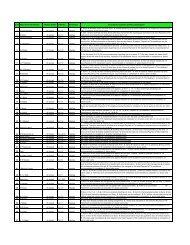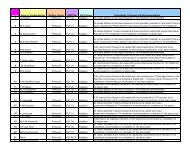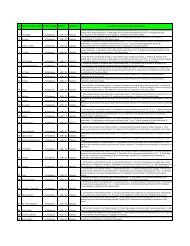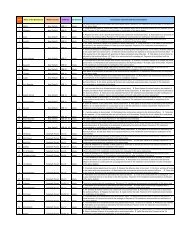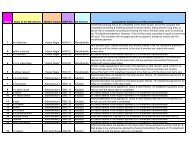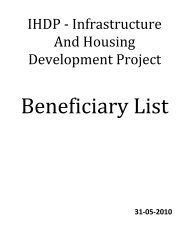Project Appraisal Document - IHDP
Project Appraisal Document - IHDP
Project Appraisal Document - IHDP
- No tags were found...
You also want an ePaper? Increase the reach of your titles
YUMPU automatically turns print PDFs into web optimized ePapers that Google loves.
Monitoring and evaluation of outcomes/results52. The PPU would monitor impact, outputs, outcomes and finances. Output monitoringwould cover the number of houses constructed, the phased disbursement of the cash grant, thenumber of water schemes completed and the number of latrines built 18 . PPU would have severalmeans to monitor implementation. The PPU would submit quarterly technical and interim financial reports on implementationprogress. A CSIA would monitor project impact and social outcomes using participatory rural appraisalmethods. The CSIA would offer an opportunity to cross verify the PPU reports. A mid-term environmental audit would verify the PHP’s compliance with agreedenvironmental guidelines and safeguards. An independent technical audit would verify compliance with engineering standards. The PPU would submit bi-annual reports detailing implementation progress and achievementof development objectives to IDA.Sustainability53. The Puttalam IDPs were displaced from the North in October 1990. Most continue to livein temporary shelter in under-served refugee camps. The IDPs lack access to safe drinking waterand sanitation. Many refugee camps are situated in environmentally fragile locations. Relationswith the surrounding non-IDP community have not been smooth due to competition over scarceresources in an arid region. The PHP is an effort to provide permanent housing for those IDPswithout it, drinking water and sanitation to both IDPs and non-IDPs, and environmentimprovement. This would help transform refugee camps into sustainable habitat and betterintegrate IDPs and non-IDPs. Regularized land title, strengthened social capital, bettermanagement of water resources and improved IDP-non-IDP relations under the PHP wouldreinforce its long term sustainability. Needless to add, the long term sustainability of any IDPhousing program would be linked to the success of the peace process and access to follow-upfinancing.Critical risks and possible controversial aspects54. Disputes with non-IDPs: Poverty in the Puttalam district is not confined to IDPs. 31% ofthe population in the Puttalam district lived below the poverty line in 2002 in contrast to thenational average in Sri Lanka of 22.7% that year. Support for IDP housing while non-IDPs live ininadequate housing could trigger resentment. The issue is compounded with an overall scarcity ofwater with the extraction of ground water by IDPs. Competition over limited resources sharpensthe resentment. Ethnic differences between the two groups in certain instances do not help either.55. Non-IDPs would need to have a stake in the success of the project. To this effect, thePHP would finance drinking water and sanitation for needy adjoining non-IDPs. IDA prepared amacro-action plan that defined guiding principles to reduce inter-community tensions in Puttalam.The Land Task Force would address both IDPs and non-IDPs in a given village cluster. The PHPwould improve the market for local masons and carpenters. The Ministry of Housing would scaleup its modest home improvement grants to non-IDPs living in adjacent villages. UNICEF would18 Details of the monitoring indicators are provided in Annex 3.15



